Dr. Kamlesh Lulla Honored with the ‘Great Immigrant, Great American’ Award for his Life’s Work
Dr. Kamlesh (Kam) Lulla is in great company, joining an esteemed list of Nobel Prize winners, entrepreneurs, artists, scholars, researchers, and public servants who have been recognized by the Carnegie Corporation of New York since 2006. Lulla was selected as Carnegie’s 2021 “Great Immigrant, Great American” national honor award. Past honorees have included astronauts Franklin Chang-Diaz (2008) and Piers Sellers (2016), as well as SpaceX founder Elon Musk (2010) and Google CEO Sundar Pichai.
Lulla, who’s enjoyed 33 years (and counting) with NASA, has also received NASA Exceptional Achievement Medals and awards, including one named in honor Asian American astronaut Ellison Onizuka. He has trained astronauts, helped develop the Space Shuttle and International Space Station Programs’ observational science capabilities, and published vital research on topics such as climate change science. The President of Ohio University has called Lulla a “genuine people-to-people ambassador for the United States” who promotes understanding through science diplomacy. As importantly, NASA’s internationally recognized scientist has been often praised for his mentoring skills and for how much he has done to develop young talent in science, technology, engineering, and mathematics, or STEM.
It’s a magnificent progression for one who, growing up in India, listened on a radio as Neil Armstrong stepped onto Moon dust. Armstrong and NASA’s achievement forever changed the world and inspired a new global generation’s quest for a place among the stars. And, while Lulla would eventually become a star in his own right, he became so by not looking outward — but looking back at the place we call home — “our own planet Earth!”
A Young Man with Stars in His Eyes
Lulla, a young undergraduate student, listened as humans landed on the Moon, “and it broadened my perspective of what is possible from that.”
Like many, he believed it to be one of the most, if not the most, historic events in the history of humankind. It is also when Lulla first had a taste of the wonder surrounding NASA and its storied history.
“At that time, the leadership in [the United States] and the people who were in charge of these programs, essentially, sent Neil Armstrong and his Apollo 11 team all over the world to give talks, and it was a great science diplomatic mission, if you will,” Lulla recalled.
And while he did not live near a city large enough to hear Armstrong discuss the illustrious Moon landing, he sought out the exhibits and artifacts that the American embassy in India sent around the country as part of that effort.
“I stood in line, in one place, for about four hours just to get a glimpse of the spacesuit, the gloves — to make sure I didn’t miss a chance to see all of that,” Lulla said.
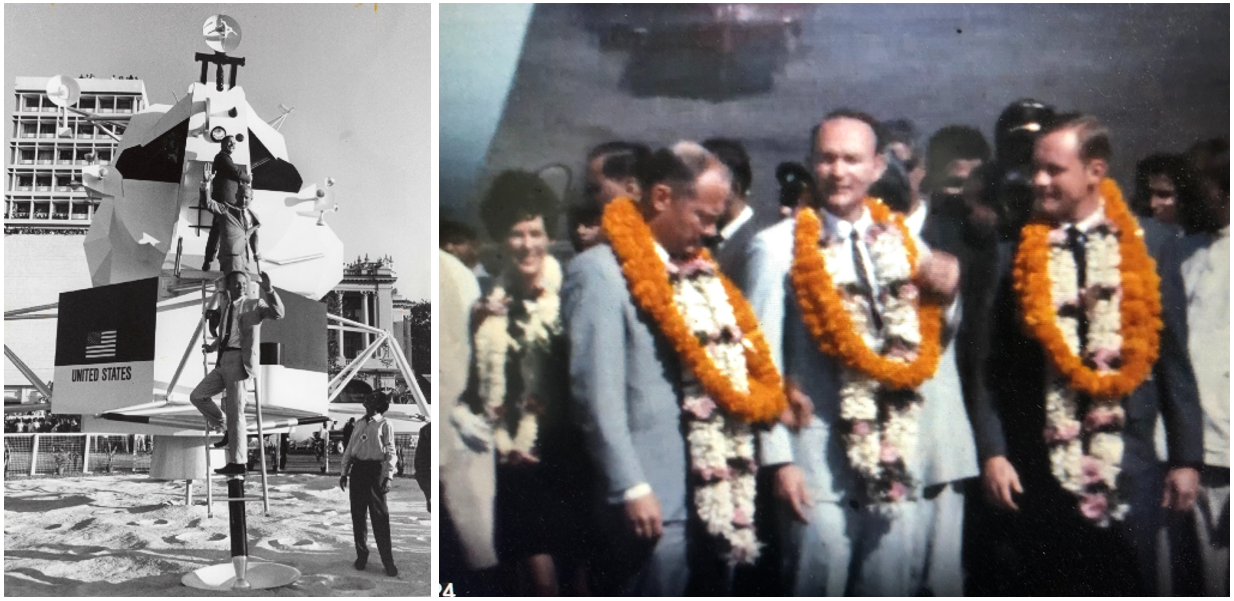 While Dr. Kamlesh (Kam) Lulla was not able to see the Apollo 11 goodwill tour as the crew visited India, he did, however, get to see artifacts from the mission, which helped to inspire his path forward. Left: In Bombay (now Mumbai), an estimated 1.5 million people greeted the Apollo 11 crew. Here, the crew members are pictured on a mock-up of the Lunar Module. Credits: Michael Collins. Right: The Apollo 11 crew is welcomed in Delhi, India, with garlands. From left are astronauts Buzz Aldrin, Michael Collins, and Neil Armstrong. Credits: National Archives
While Dr. Kamlesh (Kam) Lulla was not able to see the Apollo 11 goodwill tour as the crew visited India, he did, however, get to see artifacts from the mission, which helped to inspire his path forward. Left: In Bombay (now Mumbai), an estimated 1.5 million people greeted the Apollo 11 crew. Here, the crew members are pictured on a mock-up of the Lunar Module. Credits: Michael Collins. Right: The Apollo 11 crew is welcomed in Delhi, India, with garlands. From left are astronauts Buzz Aldrin, Michael Collins, and Neil Armstrong. Credits: National Archives
Years later, his work would intersect with the space agency again as he began doing research for his doctorate in environmental and ecological sciences. “I started using remote-sensing data (Earth Resources Technology Satellite, or Landsat data) that was available through the public domain — so there was my first attraction to NASA, even before I ever knew I would end up being at NASA.”
The nascent NASA data set Lulla on a path for his first doctorate (he would later end up with two of them) and kick-started his career as a university professor in India. Then, he had the opportunity to apply to an international fellowship program.
“I got selected and got to come to the U.S. for a short time; and, during that time, I explored my new passion of applying space-based observational data to the issues that we have on Earth — land use problems, water resource problems, global issues such as these,” Lulla said. He ended up earning his second doctorate in the United States in space remote sensing and geoscience.
It was only the beginning.
A Staggering Body of Work
Lulla’s research, technology development, and educational outreach in Earth observations and remote sensing has spanned more than four decades, long before he joined NASA, and his research papers have appeared in many peer-reviewed journals. He has also co-edited and co-authored eight books, including one published in concert with NASA’s Russian counterparts during the years of the Shuttle-Mir Program.
“One of the major objectives of the [Shuttle-Mir Program] was for Russian cosmonauts and American astronauts to acquire imagery of Earth using various techniques and cameras and sensors,” Lulla said. Russian scientists worked alongside Lulla and American experts to create the book, “Dynamic Earth Environments,” a 300-page volume, edited with Lev Dessinov, Cynthia Evans, Julie Robinson, and Patricia Dickerson, that catalogues changes in the Earth processes through remote sensing and geoscience. The early collaboration also illustrates how a commonality in learning about our home planet helped further cement a relationship with our international partner thanks to diplomacy through science.
Another book, “Costa Rica from Space,” was created from a partnership between Lulla and another “Great Immigrant, Great American” award winner, astronaut Dr. Franklin Chang-Diaz. The two linked up when Lulla was training crew members on Earth observations during the Space Shuttle Program.
“Franklin Chang-Diaz and I were passionate about mentoring the next generation of scientists and engineers and making observations that are very relevant to Earth-related disciplines,” Lulla recalled.
This, in turn, prompted Chang-Diaz to invite students from Costa Rica to Lulla’s branch during the summer, where they learned how to conduct remote-sensing activities and complete image analyses.
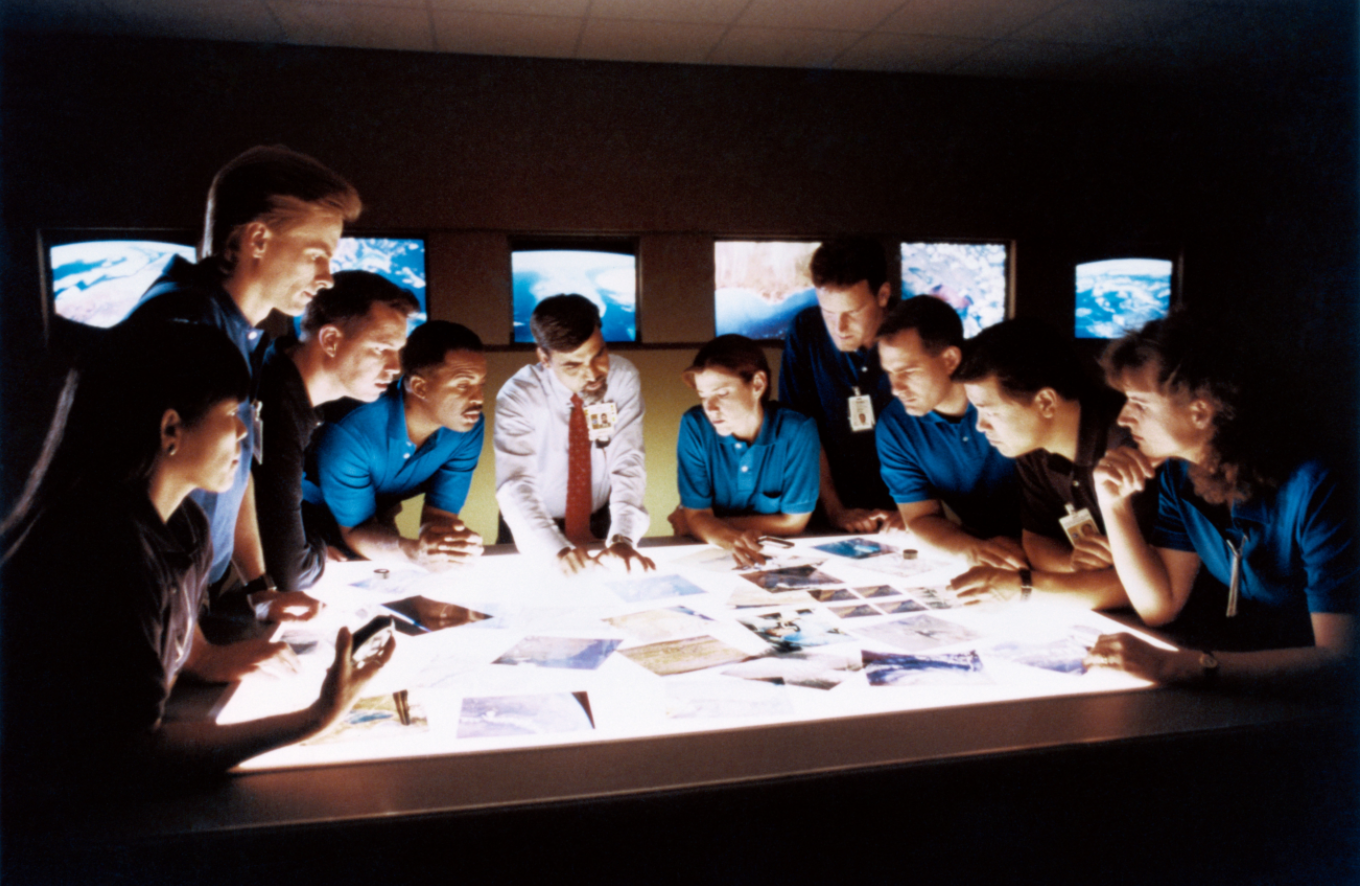 Filming the Space Center Houston large-format film production entitled: “To be an Astronaut.” Dr. Lulla instructs on Earth imagery. Credits: NASA
Filming the Space Center Houston large-format film production entitled: “To be an Astronaut.” Dr. Lulla instructs on Earth imagery. Credits: NASA
“Franklin Chang-Diaz was able to convince the university in Costa Rica — called E.A.R.T.H University — to support the project and sponsor them,” Lulla said. “What we had to do in our branch at NASA was provide them with expertise, training … reskilling them. So at the end of this project, which was a passion of Dr. Chang-Diaz and myself, we had collected a lot of beautiful imagery of Costa Rica from space through shuttle flights.”
The E.A.R.T.H University decided to publish the students’ comprehensive research. “And that book, ‘Costa Rica from Space,’ in my view is unique because it was in Spanish and English, and it shows the images of Costa Rica taken from space,” Lulla said. Not only that, but the book, edited with Bert Kolhmann and Justin Wilkinson, was published by none other than the United Nations, showcasing international collaboration at its best.
The latest book Lulla helped shepherd was “Wings in Orbit,” which many shuttle fans might be familiar with. This scientific tome, edited with Wayne Hale, Helen Lane, and Gail Chapline, captures the legacy of the famous winged space shuttles that provided ready access to space and enabled cutting-edge research and investigations — serving as a precursor to the International Space Station Program.
“I was very much involved both as a lead and a scientist in developing observational facilities — what they call window observational facilities on the station. The wonderful windows that you see, and the imagery that comes out of that, originated with a lot of hard work,” Lulla said.
One of Lulla’s fondest projects come from the meeting of two of his passions: mentoring young people and Earth imagery.
“I worked with a great educator and the first female shuttle, astronaut Sally Ride, and sort of became a part of her team to develop this program called EarthKAM,” Lulla said. “A lot of people don’t know that EarthKAM started from my branch as an Earth observation initiative for young students. (It was first called KidSat, and from KidSat it became EarthKAM.) I had great honor and pleasure in working with Sally in getting EarthKAM off the ground, and was very pleased with the name Earth ‘KAM!’”
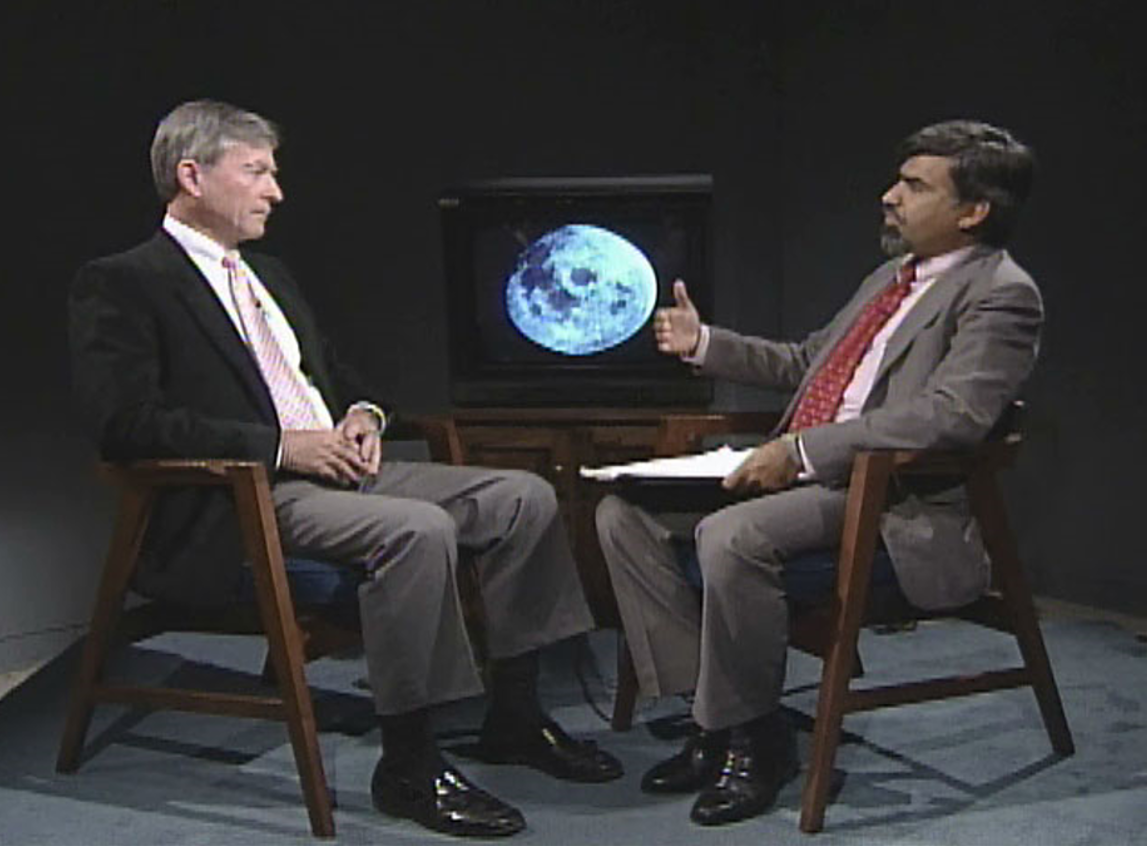 Dr. Lulla interviewing astronaut and moonwalker John Young for a NASA TV segment on “Why Explore Space?” for a space science workshop in 1990. Image courtesy of Dr. Kamlesh Lulla.
Dr. Lulla interviewing astronaut and moonwalker John Young for a NASA TV segment on “Why Explore Space?” for a space science workshop in 1990. Image courtesy of Dr. Kamlesh Lulla.
Legacy of Inspiration
Even though Lulla has many projects worthy of renown, he is most proud of the legacy he fosters with each person he interacts with. Mentoring is inherent to his nature, in part because of his upbringing and cultural heritage.
“So the culture that I grew up [in] was that you must work hard. More importantly, in addition to working hard, you must always make sure that you have some goals and aims that you want to fulfill that are not only good for you and your family, but for society at large,” Lulla said.
Lulla, whose hometown was not far from where Mahatma Gandhi used to live, was influenced by the leader as well as by Dr. Martin Luther King Jr. an ocean away.
“Those are the kind of cultural values we grew up with,” Lulla said. “Working hard is great, but what are you doing for society? What are you doing for humanity?”
Lulla also leans on his family’s values. “I grew up in a family of educators — that had a strong influence on me. So getting bachelor’s or master’s or doctorate degrees was not uncommon; it was expected. Having a high level of education was a cultural value. Having integrity and serving society was a cultural value for me.”
And while he began inspiring inquisitive minds as a professor, it easily metamorphosed in his work with NASA. Lulla often goes on speaking engagements, to conferences, and embarks on public outreach — whether in an official capacity or not. In fact, he sports his NASA gear as a means to spark conversation.
“For example, if I’m going to buy groceries and I see a young high school student working there, and they see my NASA pin or my NASA hat, sometimes they’ll ask me, ‘What do you do?’ And I’ll say I work on this interesting project … and then the conversation starts,” Lulla said. “Not every time you will be able to bring someone into the STEM workforce — that’s not the purpose. The purpose is to make them aware, because in my view, an enlightened society, especially for space exploration, is going to help NASA in a broader way.”
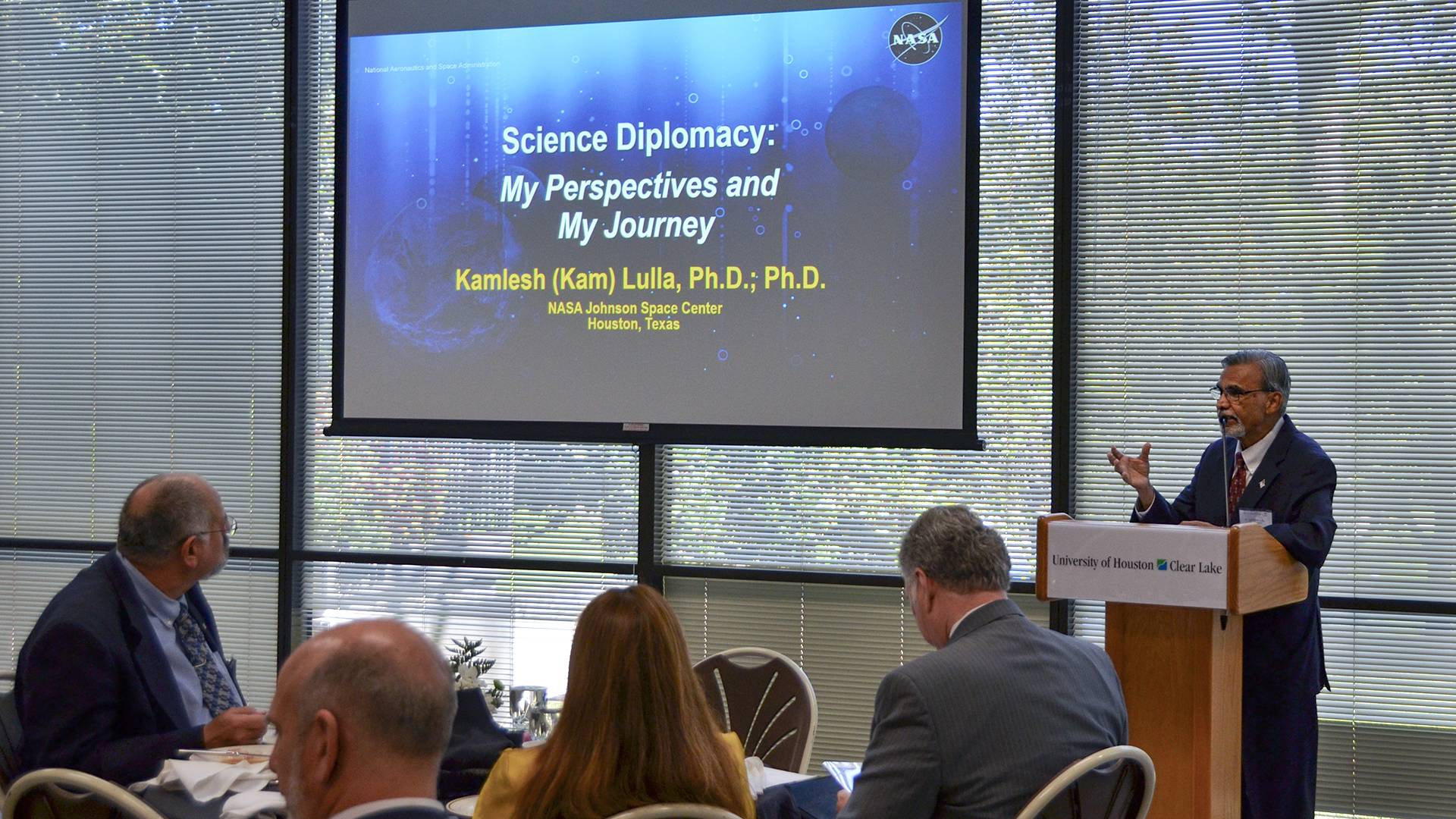 Dr. Lulla talks science diplomacy at a University of Houston-Clear Lake workshop. Image courtesy of Dr. Kamlesh Lulla.
Dr. Lulla talks science diplomacy at a University of Houston-Clear Lake workshop. Image courtesy of Dr. Kamlesh Lulla.
And as much as Lulla succeeds, he is even happier seeing it happen for others.
“In my view, NASA has a great history of interns, co-ops, and visiting professors, visiting faculty, so it was natural to engage that group of people,” Lulla said. “When I was working in the Space Shuttle Program, and I was a branch chief for the Earth Sciences Branch and Flight Sciences Branch, there were interns from research universities, from minority universities … and I looked at their projects and took them to lunch. Many times I would encourage them to get a master’s degree — and I knew full well that if they got a master’s degree, they wouldn’t come back and work in my branch (which is fine, because, ultimately, good people are wanted everywhere). And so, as manager, I always had a principle that if somebody from my branch is being offered a better position somewhere else, that means I’ve done a good job mentoring them and preparing them for flight.”
Fledging students, career professionals needing advice and direction — all have benefitted from the gentle guidance and inspiration that Lulla never hesitates to offer, no matter how busy he might be. (And, we can guarantee he is busier than most.)
“I went to the University of Nebraska-Lincoln, and I gave a talk at a conference called Women in Physics,” Lulla said. “A good 18 months later I received an email from this woman, and she said, ‘Hey, I heard your talk at this Women in Physics conference, and now I have a NASA internship, and I’m excited. Had I not listened to you, I may never have thought about applying to NASA for an internship.’ That’s a legacy.”
Each life touched sparks an exponential reaction throughout the world, prompting others to do great things as a result. It may not be a technical law of the universe, but perhaps it should be.
Earthly Treasures
“On a human spaceflight, we did a lot of things that were very, very important and very relevant to Earth sciences and Earth observations, now what we call climate change, or climate science,” Lulla said. “My motto, at that time when I was a branch chief, was that every space shuttle mission was a mission to planet Earth.”
Lucky for us, Lulla has enjoyed a lifelong fascination with our planet, which has translated into groundbreaking research that will be more useful than ever as the thermometer foreshadows challenges ahead.
“Every time the shuttle flew, even if the shuttle launched the Hubble telescope, astronauts were looking at Earth — we had cameras pointing to Earth,” Lulla said. As chief scientist, “we made wonderful contributions in that area.”
Lulla continues to contribute to geoscience remote sensing by serving as a chief editor of an international science journal focused on remote sensing and geoscience. This journal is read in over 75 countries, which he considers as an extension of his science diplomacy efforts.
In addition, Lulla devotes his energies to his personal mission of inspiration from the University Collaboration and Partnership Office within Johnson’s External Relations. And, as he welcomes new researchers and STEM professionals into NASA’s orbit, the work he began more than 30 years ago continues at a feverish pace as the world, for now, keeps reliably spinning around its axis.
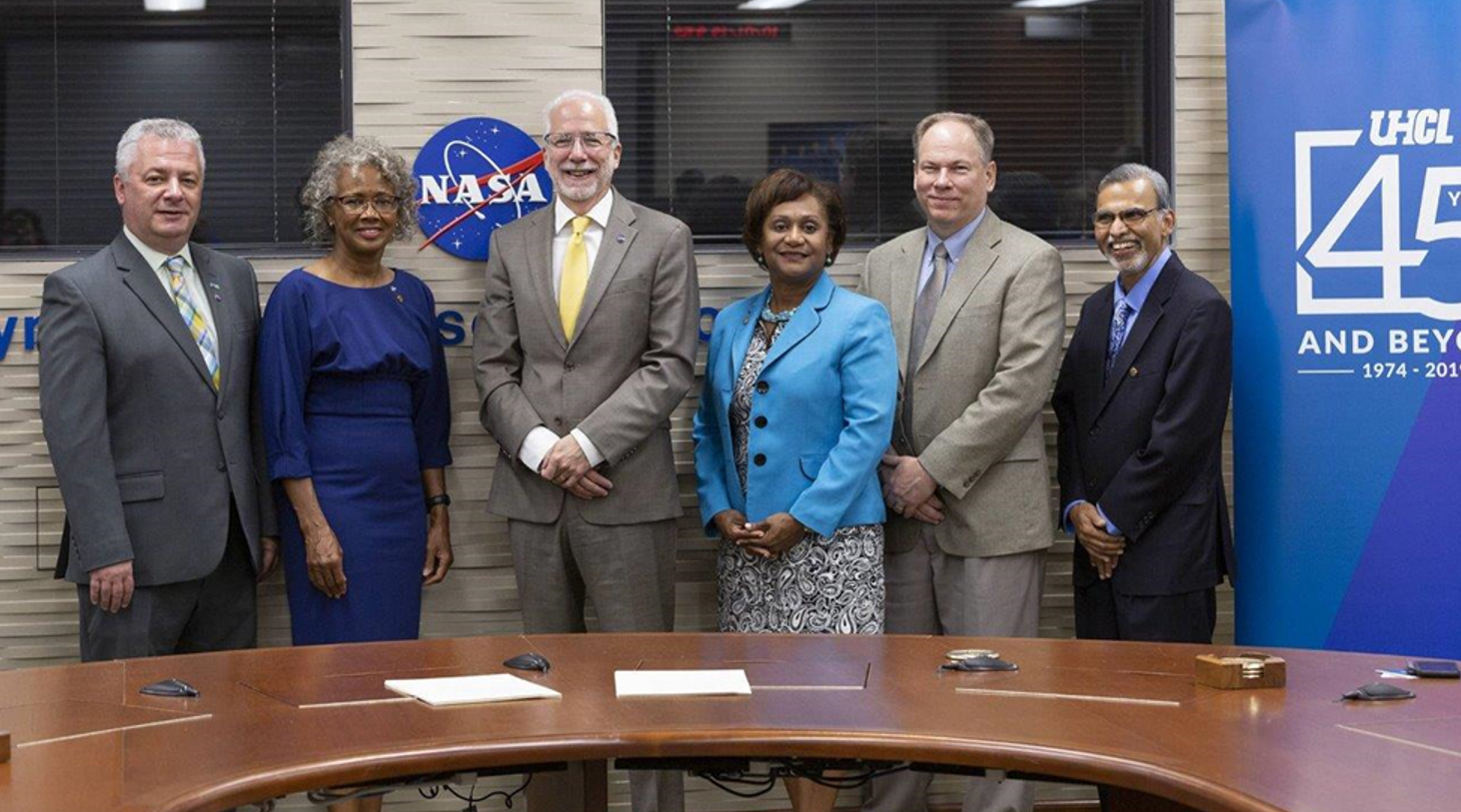 Dr. Lulla, far right, represents the University Collaboration and Partnership Office at a Space Act Agreement signing ceremony in 2019 with leaders from NASA's Johnson Space Center and the University of Houston-Clear Lake. Credits: NASA
Dr. Lulla, far right, represents the University Collaboration and Partnership Office at a Space Act Agreement signing ceremony in 2019 with leaders from NASA's Johnson Space Center and the University of Houston-Clear Lake. Credits: NASA














